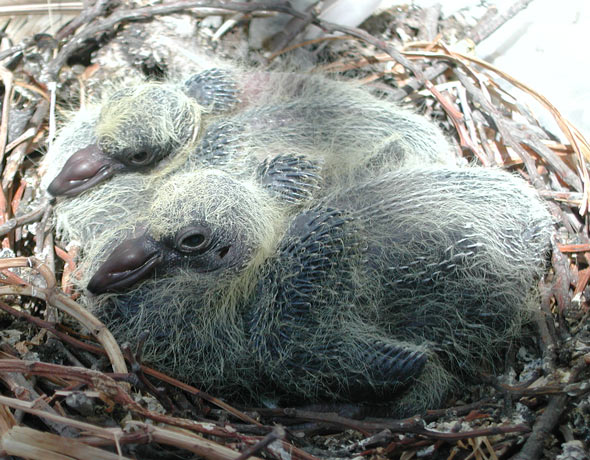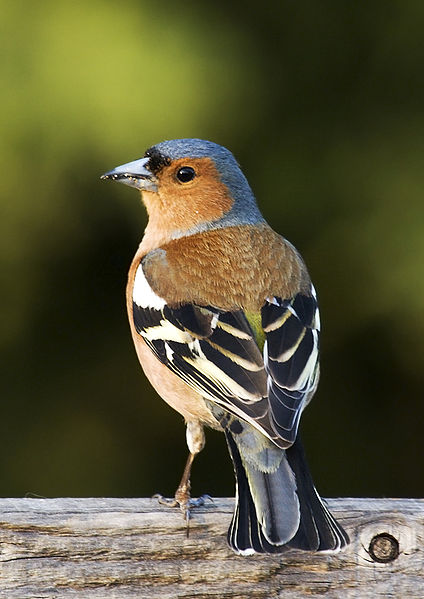It’s well known that birds exhibit an extraordinary degree of care and protectiveness towards their chicks…having been attacked by avian parents ranging from owls to ostriches, I can vouch for this firsthand! As impressive as this may be, most folks tend to accept it as a matter of course – the survival of the species, after all, depends upon the new generation. However, an amazing new study at the University of Bristol (UK) has revealed that female domestic chickens actually seem to exhibit empathy – that is, the ability to share and be affected by the emotional state of another individual. Read More »
Category Archives: General Bird Care
Feed SubscriptionEducational TV for Prospective Parrot Owners – a Petition to Animal Planet
Today I’d like to highlight an interesting new idea that could be of great benefit to parrots and parrot owners everywhere. A petition posted on the Causes.com website asks the Animal Planet Network to air shows concerning the potential problems involved in parrot ownership, with a view towards reaching people before they purchase a parrot. I was made aware of this important effort via George Sommer’s wonderful weekly column From the Parrot’s Beak. George’s updates, carried by the Boston Fish and Bird Examiner, are packed with husbandry tips, stories, links to conservation articles and much more –I heartily recommend signing up for his email mailing list. Read More »
Hand-Rearing Young Pigeons and Doves
 A ThatBirdBlog reader in Bangkok, Thailand recently contacted me concerning the hand-rearing of Zebra Dove nestling whose parents had been attacked by a crow. The incident reminded me that spring is on the way, and with it will come a number of calls concerning young pigeons and doves (or “squabs”), that have fallen from their nests or have otherwise become orphaned. Those who keep pigeons and doves as pets, or who “fly” them as a hobby, are also sometimes called upon to raise abandoned nestlings.
A ThatBirdBlog reader in Bangkok, Thailand recently contacted me concerning the hand-rearing of Zebra Dove nestling whose parents had been attacked by a crow. The incident reminded me that spring is on the way, and with it will come a number of calls concerning young pigeons and doves (or “squabs”), that have fallen from their nests or have otherwise become orphaned. Those who keep pigeons and doves as pets, or who “fly” them as a hobby, are also sometimes called upon to raise abandoned nestlings.
Crop Milk
Pigeons and doves depart radically from other birds when it comes to rearing their chicks. Rather than providing them with insects or fruit, breeding adults produce a semi-solid nestling food known as pigeon milk or crop milk. While not related to mammalian milk, there certainly are some parallels.
The “milk” is secreted from the lining of the crop, which is a food storage organ located at the end of the esophagus (base of the throat) of most birds. It is higher in protein (38%) and fat (58%) than both cow and human milk, and allows for very rapid growth. Crop milk also contains several vitamins and minerals, and is produced by both males and females. Read More »
Simple, Effective Ways to Heat your Bird’s Cage or Bird Room
 This winter’s severe weather has many bird owners re-thinking the ways in which they provide heat to their pets (and to themselves!). Late winter, spring and autumn can be even trickier than mid-winter, as warm days and frigid nights often arrive back-to-back.
This winter’s severe weather has many bird owners re-thinking the ways in which they provide heat to their pets (and to themselves!). Late winter, spring and autumn can be even trickier than mid-winter, as warm days and frigid nights often arrive back-to-back.
Note: be sure to check with an electrician before adding any heating elements to your home, and to follow the manufacture’s directions carefully. When using heat bulbs, be aware that household fixtures may not be suitable – most require the use of a ceramic fixture.
Oil-Filled Radiators
One of the best options for heating entire rooms is the oil-filled radiator. I have used these with great success in bird and reptile holding rooms in several zoos, as well as at home.
Oil-filled radiators provide even heat throughout the entire room, so that extra-hot or cool spots are eliminated. They are especially useful for those keeping several birds, as the need for individual bulbs and fixtures for each cage is eliminated. I have also relied upon oil-filled radiators when living in especially cold or drafty homes, as operating one was less expensive, and more effective, than heating the entire house.
I’ve not compared the various brands, but have found DeLonghi Oil-Filled Radiators to meet my needs admirably. I especially like the fact that their thermostats, once set, maintain temperature without further adjustment.
Incandescent Heat Bulbs
Heat-producing bulbs are generally associated with reptile care, but they are widely used in zoos to provide a warm spot for birds. While they can heat entire cages, their main value lies in their ability to provide a warm “basking site”.
As most birds are kept in open-barred cages, incandescent bulbs are perfect for providing some additional warmth without over-heating the entire enclosure (as can happen in glass aquariums housing reptiles). They are also useful for sick or newly-fledged birds. Several models provide UVA light, which has been shown to be of value to many species, as well as heat.
Red or black night-viewing bulbs, also marketed primarily for reptiles, are useful at night, or in situations where additional daytime illumination is not needed; birds do not sense the light they emit and hence will not be disturbed while sleeping.
Ceramic Heat Emitters
 Infra-red ceramic heaters, available in 40-250 watt strengths, provide warmth without light and so can be used by day and night.
Infra-red ceramic heaters, available in 40-250 watt strengths, provide warmth without light and so can be used by day and night.
In my experience, ceramic heaters spread heat over a wider area than do incandescent heat bulbs, but do not provide the room-wide coverage that is possible with oil-filled radiators.
Full Spectrum Lighting
Light is important to birds for reasons other than heat generation. More and more studies are showing that UVA and UVB radiation helps maintain strong immune systems, and encourages natural activity levels and breeding. Full spectrum bulbs designed especially for birds are now readily available; please see the article below for further information.
Further Reading
Full Spectrum Lighting for Birds
Heating and Housing Sick Birds
Crimson Sunbird image referenced from wikipedia and originally posted by Lip Kee Yap
Feeding Finches – Tips and Special Considerations – Part 2
 Please see Part 1 of this article for a discussion of the importance of offering your finches more than a simple “seed-only” diet. Today I’d like to suggest some foods that will help to keep your birds in good health and brilliant color, and which may encourage breeding.
Please see Part 1 of this article for a discussion of the importance of offering your finches more than a simple “seed-only” diet. Today I’d like to suggest some foods that will help to keep your birds in good health and brilliant color, and which may encourage breeding.
Live Insects and other Invertebrates
Insects and other invertebrates are essential for most finches, and critical during the breeding season. I’ve always maintained insect traps, such as the Zoo Med Bug Napper, to help meet the needs of my finches.
Try collecting small grasshoppers, crickets, sow bugs, beetles, flies, termites, grubs and moths. Please see my articles on Collecting Feeder Insects to learn more about increasing dietary variety. Consider raising mealworms as well, so that you’ll always have a supply of nutritious pupae and newly-molted grubs on hand. Read More »
 That Bird Blog – Bird Care and History for Pet Birds
That Bird Blog – Bird Care and History for Pet Birds
